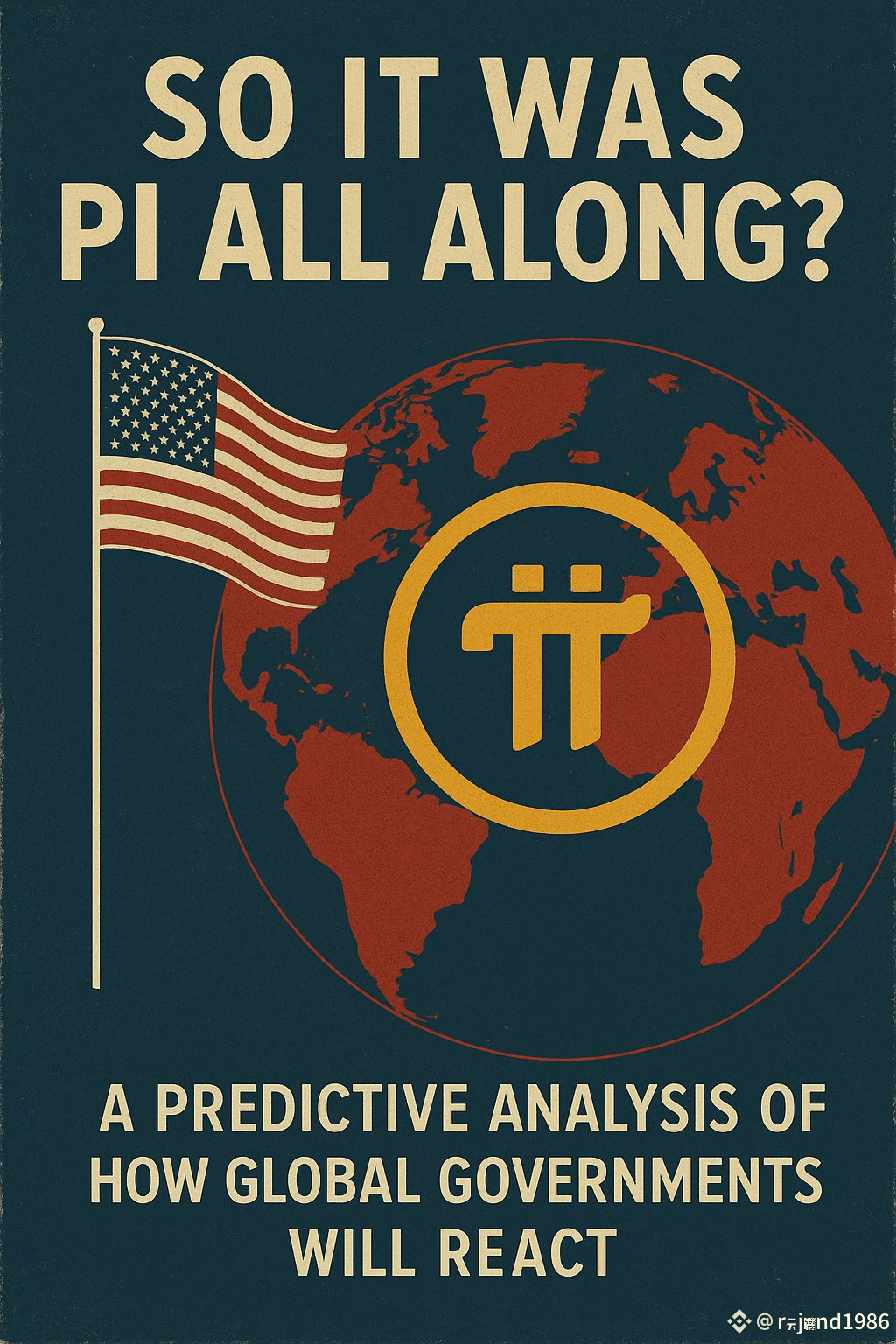" So It Was Pi All Along? "
How Global Governments Will React Upon Realizing Pi Network Is the U.S.-Backed Stablecoin Infrastructure
The Stealth Reset: When Did the U.S. Implant Pi?
Why CBDCs Can’t Compete: Pi Is the System Itself
It’s Not Just Regulation—It’s Civilization Shifting
The First Currency Infrastructure Not Made by a State
[ This article includes predictive analysis and may differ from actual outcomes. ]

1. The First Shock: Connecting a Quiet Law to a Quiet App
Many nations are aware that the U.S. is clarifying its stablecoin legislation.
What they **fail to understand** is the gravity of a specific clause:
*State-issued CBDCs are banned, and only community-issued stablecoins are permitted.*
Instead of recognizing this as a **structural revolution**, they imagine traditional models—USDC, PayPal USD, Circle—or assume another bank-private hybrid is forthcoming.
Few, if any, suspect that the U.S.-backed infrastructure is **already deployed** across 240+ countries in the form of **Pi Network**, which has been under **silent development for over a decade**.
Once the connection becomes clear:
**“The U.S. passed its stablecoin laws to make Pi possible.”**
At that moment, central banks won’t be confronting an external threat—they’ll realize it’s already inside the system.
2. Second Reaction: “Did We Already Lose Monetary Sovereignty?”
Pi is not merely a coin—it’s a full-stack economic infrastructure, featuring:
* Smart contract–driven decentralized commerce
* DAO-based organizational governance
* Borderless stable value system (GCV)
* Integrated AI for audit, analytics, and financial management
* A plug-and-play App Studio for industry-specific apps
The realization that this network is already active, and their citizens are mining it voluntarily, will strike governments with an uncomfortable truth:
**Sovereign control over money may have already ended.**
3. Third Reaction: Political and Financial Disruption
If Pi Network is perceived as a **U.S.-sanctioned debt-resolution mechanism**—designed to replace dollar-based liabilities with a new form of programmable value—governments may splinter internally:
* Central banks may face revolt or reorganization
* Domestic CBDC programs may be shelved in favor of Pi-aligned strategies
* Political factions could emerge: isolationist vs. integrationist, anti-U.S. vs. pragmatic pro-Pi
* Global institutions like the IMF, BIS, and WEF may struggle to coordinate their stance
Especially if it's revealed that **Pi's GCV (Global Consensus Value)** is hardcoded as a stable benchmark and **legally exempt from passive interest regulations**,
the realization will not be technological—it will be geopolitical.
4. Predictable Global Responses
[Scenario A] - Strategic Integration
Advanced economies (EU, Japan, Singapore) may begin integrating Pi into public infrastructure.
If their industries already operate apps within Pi App Studio,
**they may favor Pi DAO models over CBDC for efficiency, trust, and market reach.**
[Scenario B] - Rejection and Censorship
Countries like China, Iran, or Russia may brand Pi as a **digital colonization tool** of the U.S. and attempt to censor or ban it.
However, such bans are difficult to enforce, and
**black-market mining and usage may accelerate**, especially in high-inflation zones.
Conclusion:
The U.S. Designed the Reset to Be Invisible
And Pi Is Its Name
Right now, most governments are working hard to **decode the wrong answer**—CBDC development.
Meanwhile, the U.S. has already embedded the right answer—
**a globally distributed, community-driven, regulation-proof network called Pi.**
Pi has achieved what no government can:
**a scale economy of trust and participation.**
Now, **no government can avoid it.**